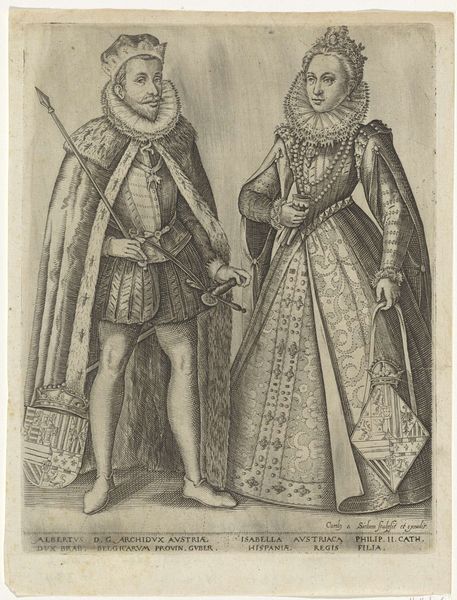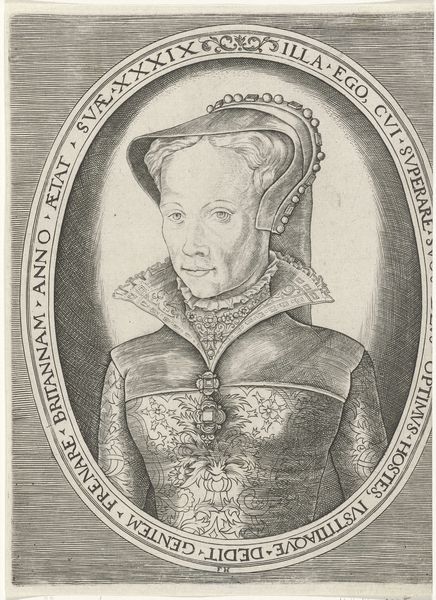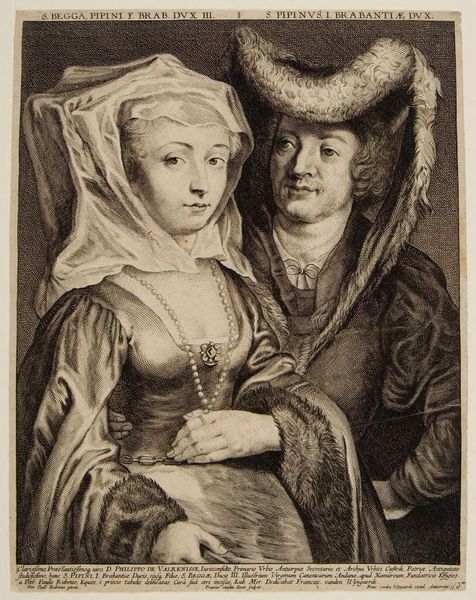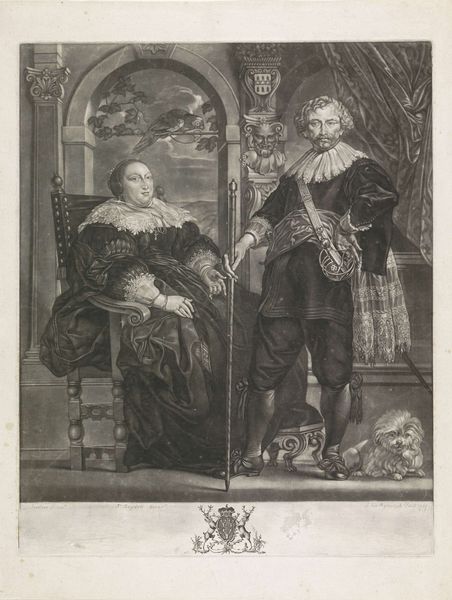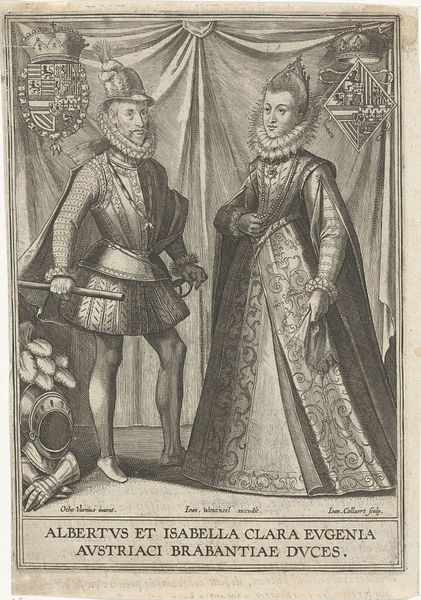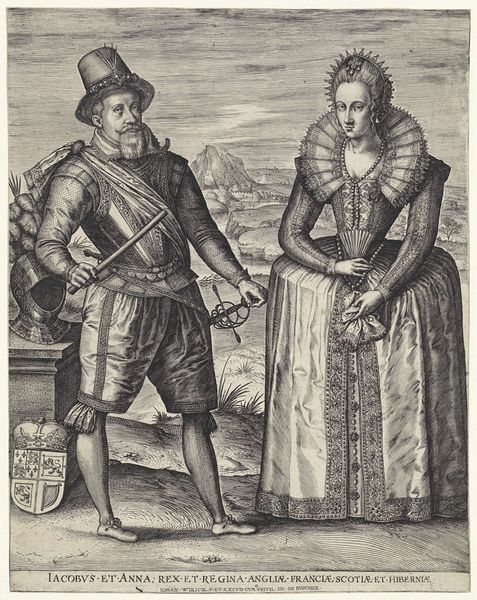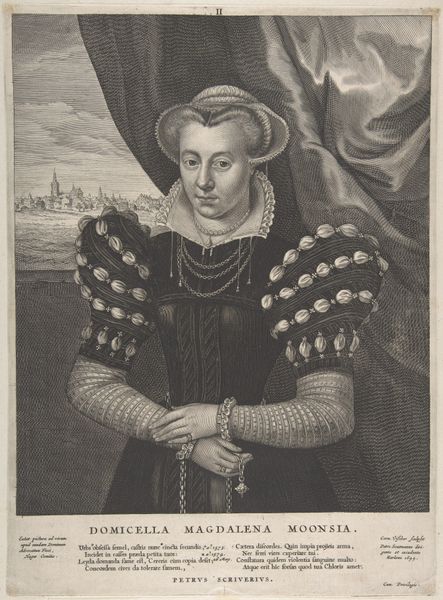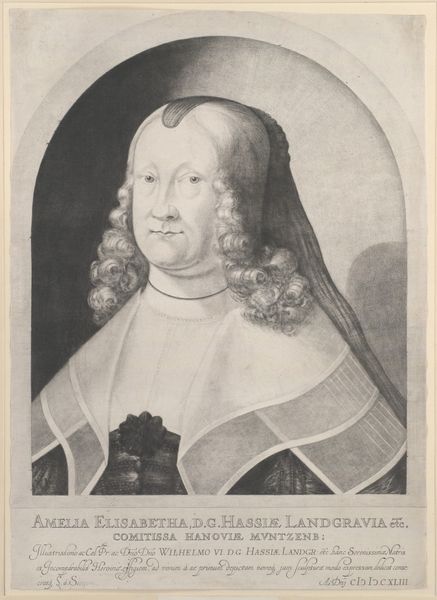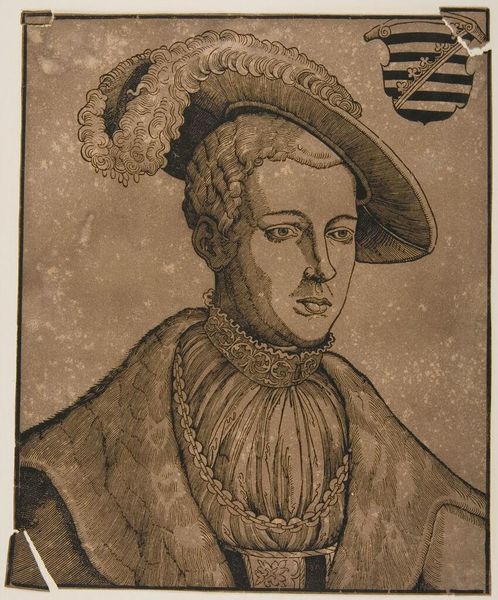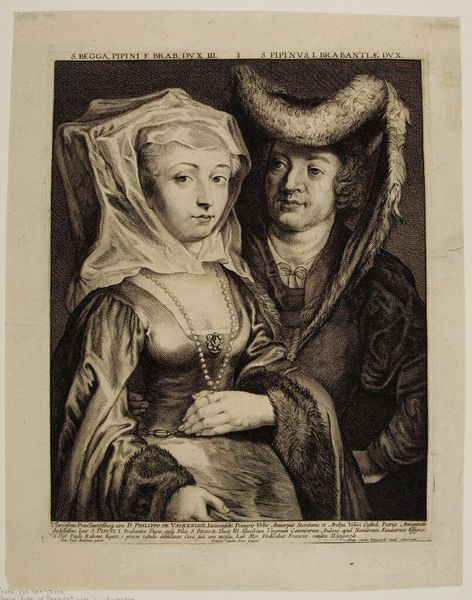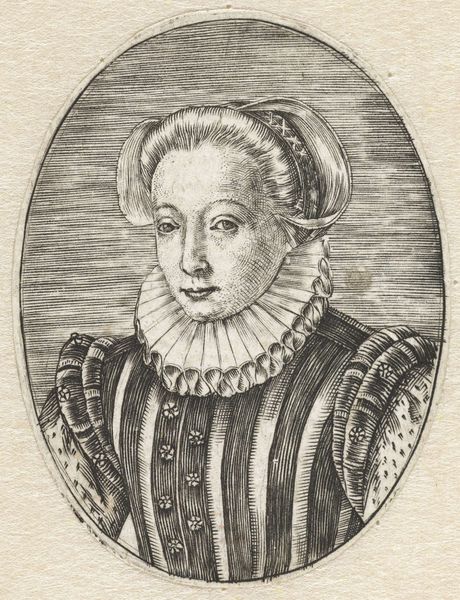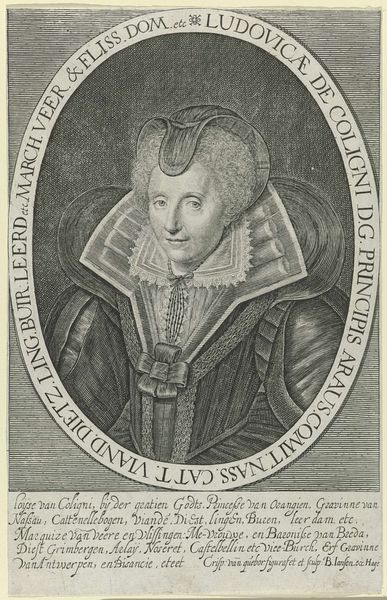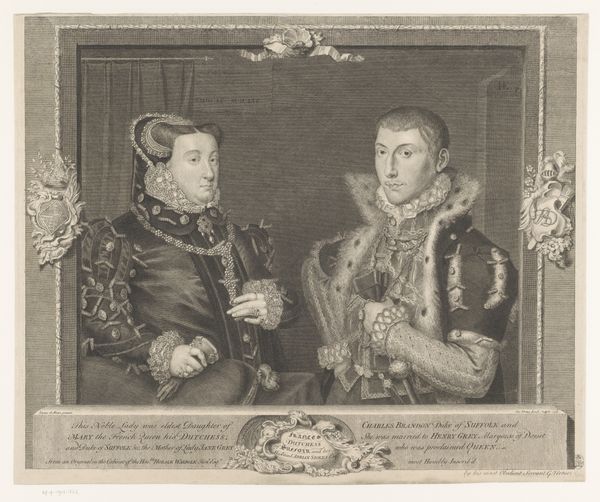
Portretten van Willem I en Louise de Coligny, prins en prinses van Oranje-Nassau 1582 - 1700
0:00
0:00
print, engraving
#
portrait
#
pencil drawn
#
dutch-golden-age
# print
#
charcoal drawing
#
figuration
#
portrait reference
#
pencil drawing
#
line
#
portrait drawing
#
history-painting
#
academic-art
#
engraving
Dimensions: height 178 mm, width 139 mm
Copyright: Rijks Museum: Open Domain
Curator: What strikes me immediately is the level of detail achieved with what appears to be a simple engraving technique; you can see textures rendered beautifully despite the monochromatic palette. Editor: Yes, there's a lot to unpack in this print, isn't there? It depicts "Portraits of Willem I and Louise de Coligny, Prince and Princess of Orange-Nassau," and it comes from a fascinating period between 1582 and 1700, placing it within the Dutch Golden Age. These images likely circulated to solidify the heroic narrative around the founding figures of the Netherlands. Curator: Heroic indeed! Just look at the ruffs, the elaborate clothing – symbols of status, obviously. The lines and hatching create dimension but also hint at the material wealth surrounding these figures. One has to think about who had access to these engravings and the consumption of such imagery at the time. Editor: Precisely. Prints like these played a critical role in shaping public perception and national identity. The reproducible nature meant that ideals represented could be disseminated across various social strata. What kind of influence might these depictions have had at a time when Dutch power and international trade flourished? Curator: Absolutely. Consider how the artists responsible relied on established visual tropes and compositional devices. A somber and restrained emotional register seems deliberate and consistent with portraying these individuals as dignified and virtuous rulers. The labor involved in producing these prints facilitated cultural consolidation; the print medium in Early Modern Europe served a vital propaganda purpose. Editor: Right. By understanding its production methods, circulation, and socio-political uses, it offers insights into the public role of images during this period, including the crafting and manipulation of personas like Willem's. Looking closely, the engraving seems rather meticulous given its intent and the scale; each line has weight in constructing these figures. Curator: Well, I have a richer sense of not only its artistic skill but also how prints in general participated actively in forming a cultural narrative. Thanks for your materialist perspective, very useful in revealing that it involves labor, medium, circulation... Editor: Thank you, and perhaps by focusing on these socio-historical aspects we have brought the symbolic importance of the materials and manufacturing in "Portraits of Willem I and Louise de Coligny, Prince and Princess of Orange-Nassau" closer to understanding.
Comments
No comments
Be the first to comment and join the conversation on the ultimate creative platform.

